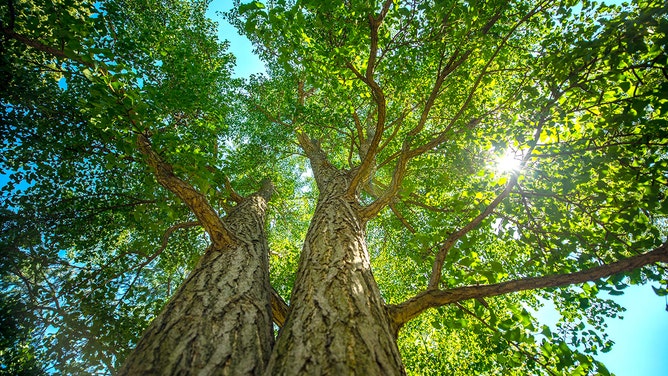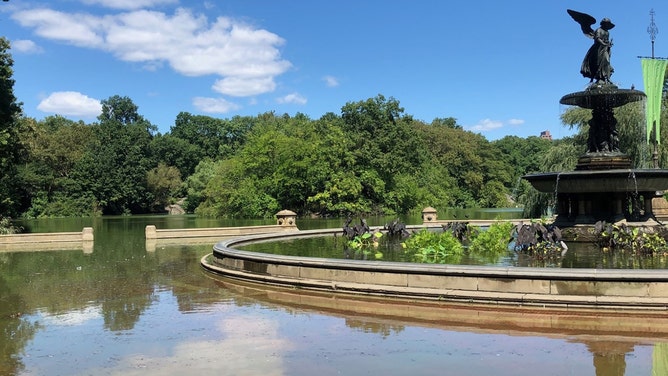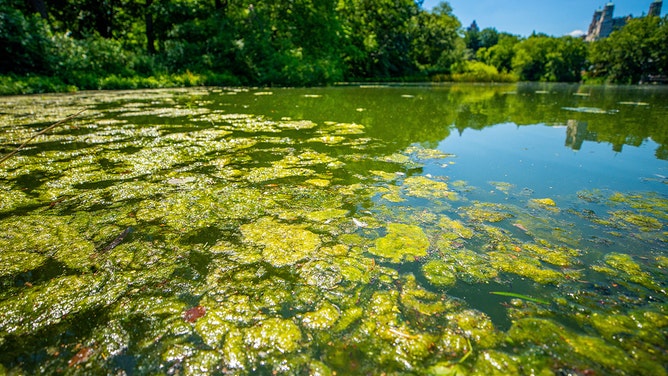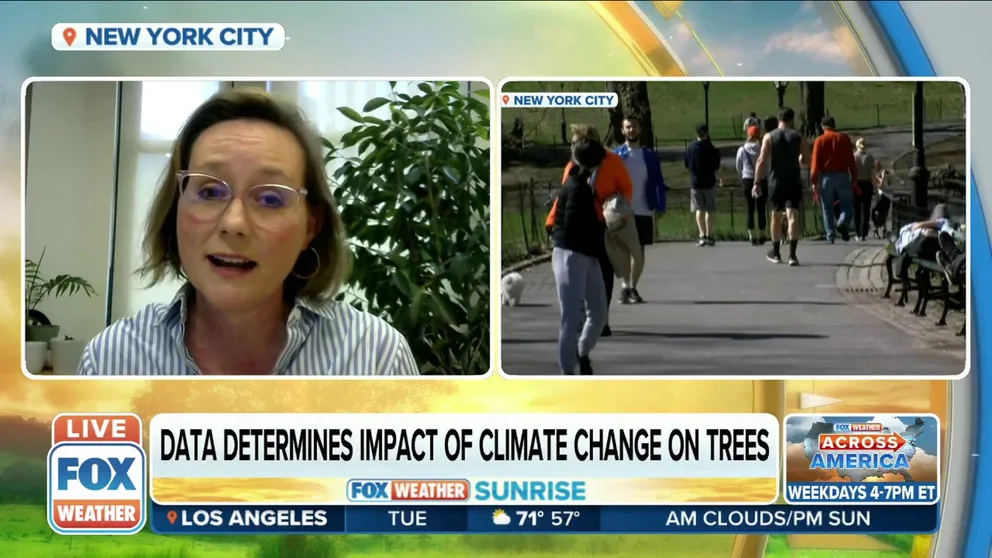New York’s Central Park now doubles as lab to study climate change
Last summer provided a microcosm of what researchers have seen happen in Central Park
Central Park used as a lab to help study the cooling effects of trees in urban areas
Researchers are studying the cooling effects of trees in urban areas. They are tracking temperatures to better manage green spaces. One of these is at Central Park.
NEW YORK – You can't think of New York City without thinking of Central Park.
The 843-acre park welcomes 42 million visitors annually and sees more visits a year than Disney World’s Magic Kingdom at 20.8 million. In addition, 50% of all New Yorkers report that the only time they spend in a natural environment is in city parks.
But the iconic landmark and a National Historic Landscape is used for more than just walks, picnics and bike rides. Scientists are now using it as a climate lab to study the relationship between climate change and urban parks.
NEW YORK CITY ARGUABLY HAS THE MOST UNIQUE WEATHER OBSERVATIONS IN AMERICA
People living in large, populated cities experience climate change in very real ways. Those in New York City know about the urban heat effect because they live in an area that is surrounded by cement and asphalt, and the buildings hold on to extreme heat during the summer.
In contrast, trees can provide a cooling effect in urban places. As light permeates the tree canopy, the leaves and the branches help absorb the light, which minimizes the ambient heat that is created.

NYC experienced the hottest July on record in 2021, and three heat waves—including 17 days that exceeded 90 degrees—highlighting the importance of a healthy tree canopy.
(Central Park Conservancy)
"We certainly are living in a warming world," said Maura Lout, executive director of the Central Park Conservancy Institute. "We know this, and we've experienced that in very devastating ways in Central Park over the last several years."
The Climate Lab is a partnership with the New York-based Natural Areas Conservancy and the Yale School of the Environment. It will help scientists understand how climate change is impacting the landscapes of the park so that they can better understand how to manage its long-term resilience.
"Our organization has spent years researching the unique role that natural area parkland in cities – forests, wetlands, and grasslands – can play in mitigating climate change," said Sarah Charlop-Powers, executive director of the Natural Areas Conservancy. "This project will shine a light on the importance of urban natural areas in addressing the climate crisis."
Last summer provided a microcosm of what researchers have seen happen in Central Park.
Hurricane Ida brought a record 3.15 inches of rain to Central Park in one hour on Sept. 1, 2021, beating the record set just 10 days prior.

Hurricane Ida brought a record 3.15 inches of rain to Central Park in one hour on September 1, 2021, beating the record set just 10 days prior, and flooded Bethesda Fountain.
(Central Park Conservancy)
In July 2021, Central Park faced at least four official heat waves and at least two the following month.
"Parks are essential for New Yorkers, as this last couple of years have proven, but flooding, high winds and extreme temperatures pose a threat to their health," said New York City Mayor Eric Adams.
In addition to the more devastating one-time events and a rise in pollution, the lab is also seeing changes in the way plants are able to grow and succeed in the park. A build-up of nutrients in run-off water has caused harmful algal blooms in Central Park’s water bodies.

Increasing global temperatures, a rise in pollution, and a build-up of nutrients in run-off water lead to the excess growth and prevalence of harmful algal blooms in Central Park’s water bodies.
(Central Park Conservancy)
"What we learn in the Climate Lab is going to be so important for helping other cities integrate the same practices, so they can do their very best to make sure that their park stays safe and welcoming for city dwellers as well," Lout said.
The end goal of the lab is to work with cities across the U.S. and expand to other parks.
"So much has been accomplished in Central Park through the 40 years of the Conservancy's work," Lout said. "We're really all about sharing that with other urban parks."
